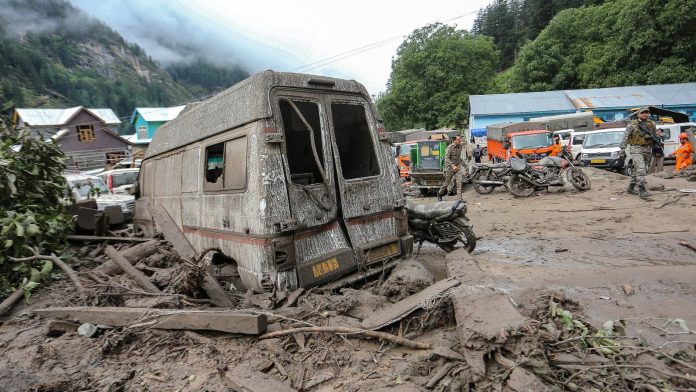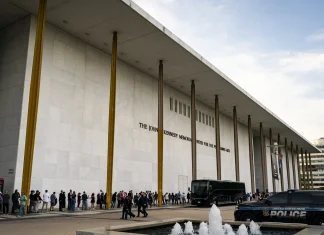When the Mountains Weep: Pakistan’s Monsoon Fury Unleashed in a Human Tragedy
Imagine waking up to a terrifying roar — not a distant storm, but the very mountains trembling beneath your feet, as if the earth itself is breaking apart. This is the grim reality for communities across northern Pakistan, where relentless monsoon rains have sparked a catastrophic series of landslides and flash floods. In just 24 hours, nearly 200 lives have been claimed, casting a dark shadow over regions already steeped in resilience.
“It was like doomsday,” says Azizullah, a resident of Buner district in Khyber Pakhtunkhwa (KP), still haunted by the chaotic night the floods struck. “I heard the mountain sliding, the ground shaking under my feet — something primal told me death was staring me in the face.” His single name echoes the many who prefer tradition and anonymity, a hint at the timeless rhythms of a land suddenly forced into violent upheaval.
Mountains in Mourning: Human Stories Amidst the Landslides
Khyber Pakhtunkhwa is often described as Pakistan’s rugged backbone — a mountainous cradle of ancient cultures, frontier fortitude, and breathtaking landscapes. But these natural heights have turned deadly. Over 180 lives were lost here, with entire villages submerged under water, houses crushed by earth and rock. In the remote tribal district of Bajaur, bordering Afghanistan, an excavator clawed feverishly through mud-clogged rubble as crowds gathered around freshly uncovered bodies covered quietly by blankets. Nearby, mourners clung to each other, offering whispered prayers amid the heavy grief.
Ali Amin Gandapur, KP’s chief minister, spoke solemnly in the wake of the disaster: “Tomorrow, the entire province will observe a day of mourning. We honor our martyrs with full state honors, and the national flag will fly at half-mast.” He revealed that a government helicopter aiding relief efforts succumbed to the ferocious weather, tragically claiming five more lives, including two pilots.
The government has officially declared the mountainous districts of Buner, Bajaur, Mansehra, and Battagram as disaster-hit zones. Emergency services continue their daunting task of rescue and recovery, with dozens still missing under the threat of further landslides.
Behind the Numbers: Who Are the Victims?
Of the 199 confirmed deaths in the last day, the toll is heartbreakingly diverse — 19 women and 17 children among them — epitomizing how natural disasters indiscriminately snatch away innocence and hope. At least 28 others strain in hospital beds, recovering from injuries that may alter lives forever.
Across the border in disputed Kashmir, under Indian administration, the story is no less harrowing. There, flash floods have engulfed a Himalayan village, leaving at least 60 dead and hundreds displaced. Rescuers are still pulling victims from the mud-choked debris, racing against time as the monsoon does not yet show mercy.
Nature’s Paradox: The Monsoon’s Lifeblood and Its Wrath
The South Asian monsoon season is a complex dance of life and death. It delivers nearly three-quarters of the region’s annual rainfall, sustaining crops and replenishing water reserves. Yet, its raw power can swiftly transform fertile fields into rivers of destruction. This year, Pakistani officials warn, the monsoon arrived early, and its fury will likely persist longer than usual.
According to Syed Muhammad Tayyab Shah of Pakistan’s National Disaster Management Authority, “The next 15 days will bring an increase in rainfall intensity, and this will worsen the already dire situation.” Warnings are issued: avoid vulnerable terrain, stay indoors, and prepare for more devastation.
Climate Change: An Unseen Catalyst
Beneath this unfolding tragedy lies a deeper crisis reshaping the planet’s weather patterns — climate change. Scientists agree: it has turned once predictable monsoon cycles into volatile monsters. Pakistan, a nation of over 255 million people, is particularly vulnerable, locked in a struggle to adapt as floods grow fiercer and timelines shift unpredictably.
In July alone, Pakistan’s Punjab province recorded a staggering 73% more rainfall than the previous year — a figure that has become increasingly common. The recent floods have already claimed over 500 lives nationwide this summer, including 159 children. For context, monsoon floods in 2022 submerged a third of Pakistan’s landmass and resulted in approximately 1,700 fatalities.
Local Voices: The Human Cost of Changing Weather
Meena, a schoolteacher from Mansehra, describes how the floods have torn through her community: “Everything we knew disappeared in hours. Our homes, our farms, even the school where I teach — water swept it all away. It’s like trying to hold onto a dream that vanishes as soon as you reach for it.”
Her words resonate beyond the immediate tragedy. They also echo global concerns about the resilience of vulnerable regions. Does the world’s collective responsibility extend to places with little say in driving climate change but bearing its harshest consequences?
Can Preparedness Save Lives?
Pakistan faces enormous challenges in responding to and mitigating such disasters. The country’s rugged terrain complicates rescue efforts, while limited infrastructure leaves many communities isolated during emergencies. Government and international aid agencies are ramping up efforts, yet the scale of destruction often outpaces available resources.
Experts argue for a multi-faceted approach:
- Investing in early warning systems and climate-resilient infrastructure.
- Community education programs to prepare locals for floods and landslides.
- International cooperation to address the root causes of climate change.
Dr. Farah Khan, a climate scientist based in Islamabad, stresses, “The future of South Asia depends on how we respond today. Floods and landslides today are warnings, and they will be louder and more frequent if we ignore the climate crisis.”
A Global Mirror: What Pakistan’s Floods Teach Us
While the scenes from northern Pakistan might seem geographically distant, their lessons reverberate worldwide. Rising storms, unpredictable rains, and natural disasters have become global touchstones of an increasingly fragile Earth.
How should we, as a global community, respond when climate change’s most vulnerable victims bear the brunt? What does resilience look like when the ground beneath your feet becomes unstable? Pakistan’s unfolding tragedy invites us all to reflect on our shared future — one where nature’s fury demands empathy, swift action, and a shared commitment to survival.
In the face of overwhelming loss, there remains a faint yet persistent hope — that communities will rebuild, that governments will act with urgency, and that humanity will listen closely to the profound, unspoken warnings whispered by trembling mountains and rushing waters.
For those watching from afar, let us not turn our gaze away. Instead, let us ask ourselves: when nature roars, who among us will stand ready to answer?










